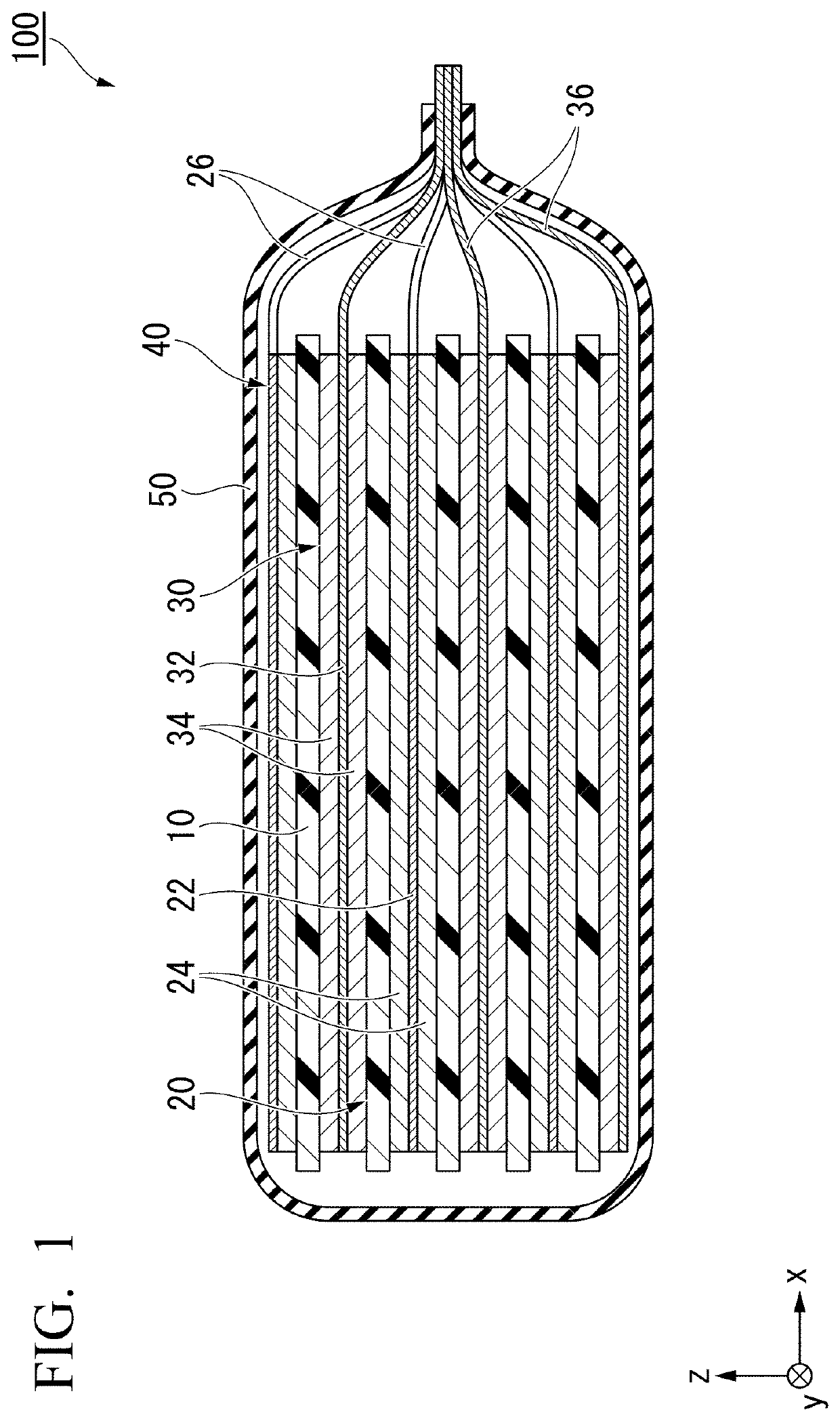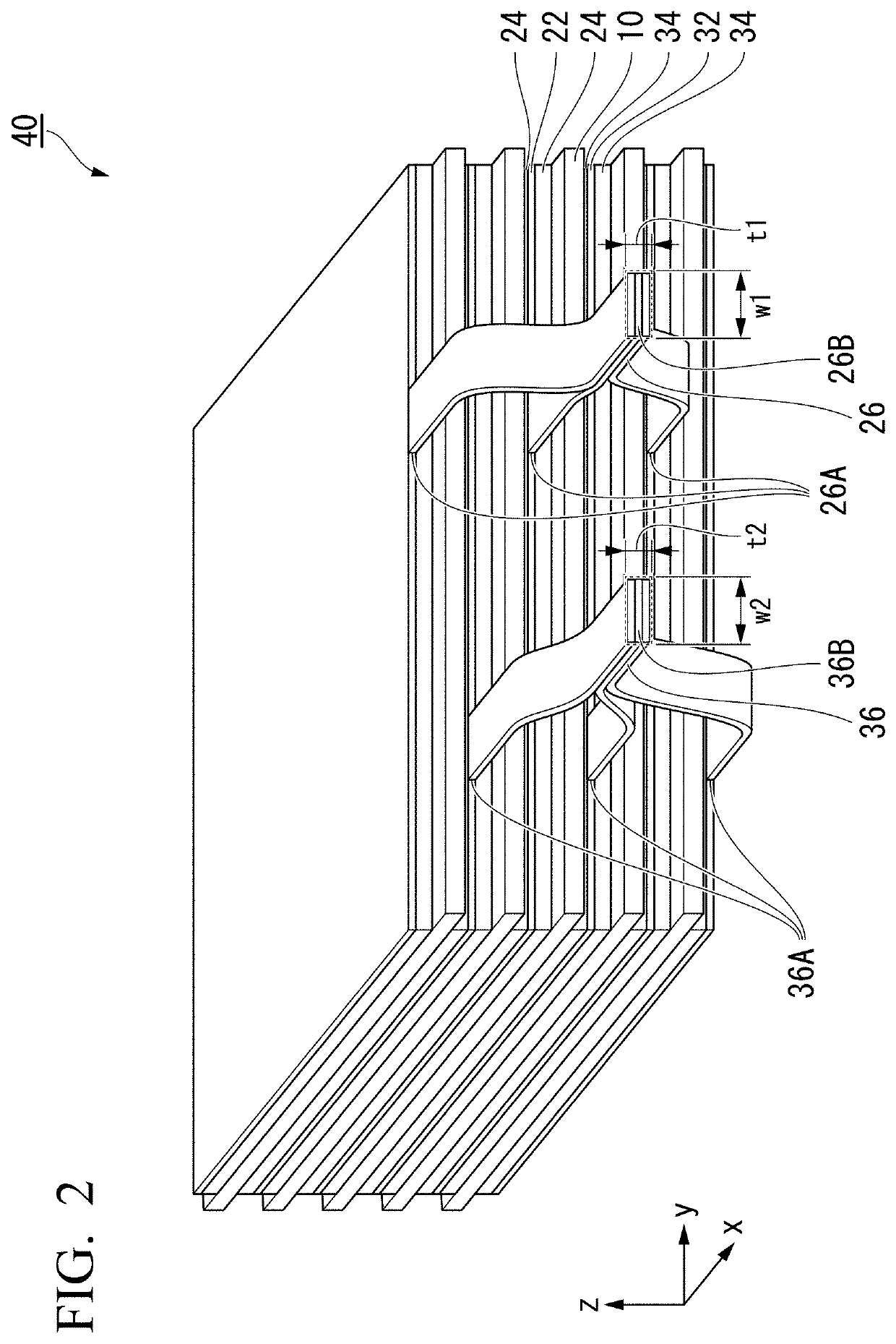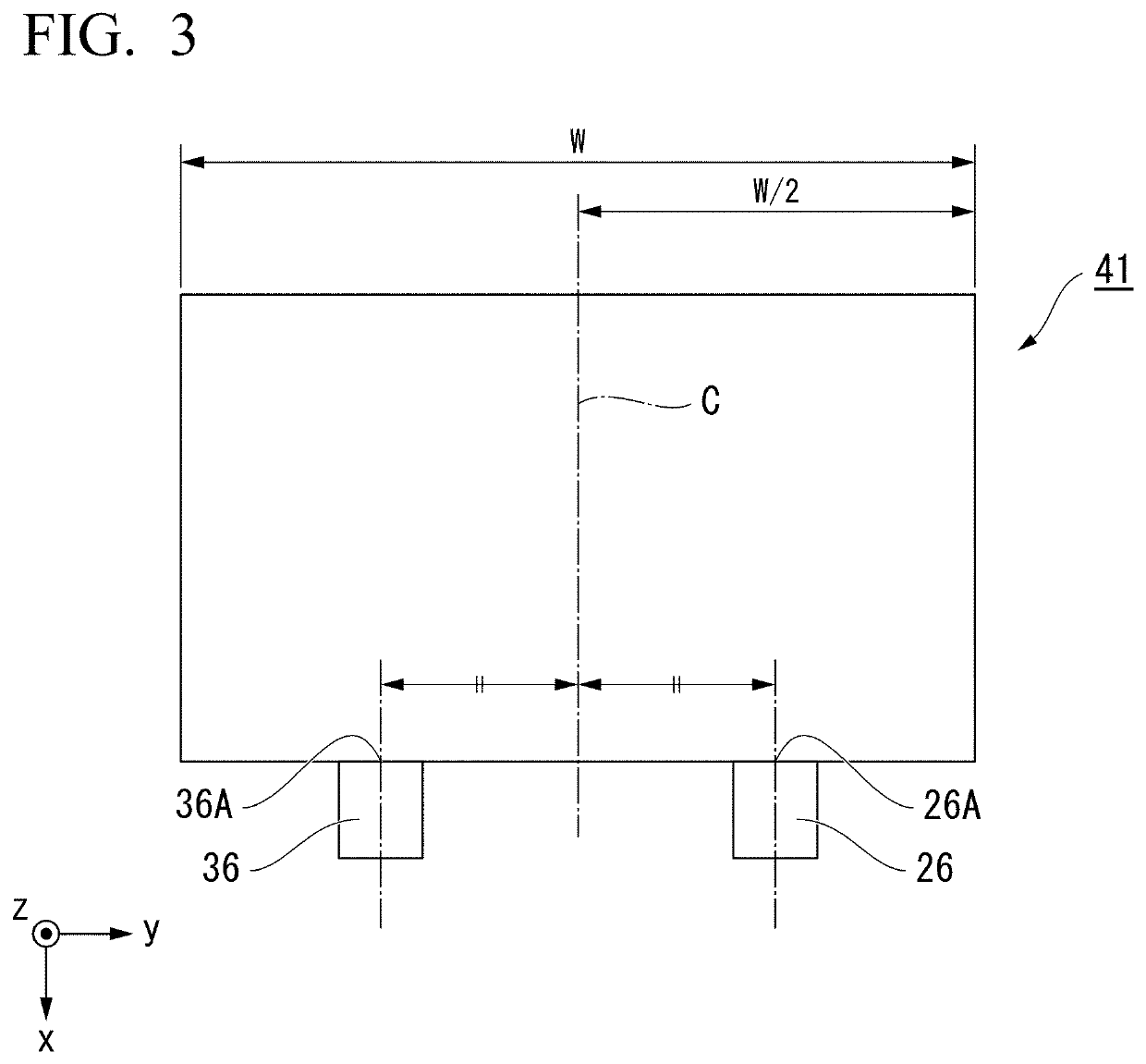Non-aqueous electrolyte secondary battery
a secondary battery and non-aqueous electrolyte technology, applied in the direction of batteries, sustainable manufacturing/processing, cell components, etc., can solve the problems of lithium ion secondary batteries, 1 cannot sufficiently reduce the deviation in the temperature distribution of batteries, etc., to achieve the effect of reducing the deviation in the in-plane temperature distribution
- Summary
- Abstract
- Description
- Claims
- Application Information
AI Technical Summary
Benefits of technology
Problems solved by technology
Method used
Image
Examples
example 1-1
[0083]First, a positive electrode was fabricated. For the positive electrode, a positive electrode active material was coated on an aluminum foil (thickness 12 μm, thermal conductivity 237.5 W / mK) to form a positive electrode active material layer. The positive electrode active material layer contains 90 parts by mass of LiNi0.8Co0.15Al0.05O2 (active material), 6 parts by mass of carbon powder (conductive auxiliary agent), and 4 parts by mass of polyvinylidene fluoride (PVDF, binder).
[0084]Similarly, a negative electrode was fabricated. For the negative electrode, a negative electrode active material was coated on a copper foil (thickness 11 μm, thermal conductivity 400 W / mK) to form a negative electrode active material layer. The negative electrode active material layer contained 87 parts by mass of mesophase carbon microbeads (MCMB, active material), 3 parts by mass of carbon powder (conductive auxiliary agent), and 10 parts by mass of PVDF.
[0085]Also, porous polyethylene having a...
examples 1-2 to 1-5
[0092]Next, maximum values of surface temperatures of the non-aqueous electrolyte secondary battery when installation positions of the positive terminal and the negative terminal were changed from the installation positions of Example 1-1 were obtained using a simulation. The results are shown in Table 1 below.
[0093]
TABLE 1(E1 / E2) / SurfaceE1 / E2d1d2d1 / d2(d1 / d2)TemperatureExample 1-20.66.015.00.41.592.5Example 1-30.67.014.00.51.292.2Example 1-10.67.813.20.61.092.2Example 1-40.68.612.40.70.892.3Example 1-50.69.711.40.90.792.5Comparative0.610.510.51.00.692.8Example 1-1Comparative0.614.07.02.00.394.7Example 1-2
[0094]In Table 1, E1 is the heat dissipation efficiency of the positive terminal and E2 is the heat dissipation efficiency of the negative terminal. In addition, d1 is the distance of the positive terminal from the center line, and d2 is the distance of the negative terminal from the center line. Therefore, a state E1 / E2=d1 / d2 corresponds to a case in which a position of the divisio...
examples 2-1 to 2-5
and Comparative Example 2-1
[0097]Next, the same investigation was conducted by changing a configuration of the battery. In Examples 2-1 to 2-5 and Comparative Example 2-1, the number of laminated layers of the positive electrode current collector was 5, a thickness of the positive electrode current collector was 15 μm, a width of the positive terminal was 10 mm, the number of laminated layers of the negative electrode current collector was 6, a thickness of the negative electrode current collector was 10 and a width of the negative terminal was 5 mm. Other conditions were the same as in Example 1-1. For the non-aqueous electrolyte secondary batteries according to Examples 2-1 to 2-5 and Comparative Example 2-1, maximum values of surface temperatures when an overcharged state was assumed were obtained by a simulation. The results are shown in Table 2.
[0098]
TABLE 2(E1 / E2) / SurfaceE1 / E2d1d2d1 / d2(d1 / d2)TemperatureComparative1.514.127.90.52.994.6Example 2-1Example 2-21.521.120.91.01.592.5...
PUM
| Property | Measurement | Unit |
|---|---|---|
| thickness | aaaaa | aaaaa |
| thickness | aaaaa | aaaaa |
| width | aaaaa | aaaaa |
Abstract
Description
Claims
Application Information
 Login to View More
Login to View More - R&D
- Intellectual Property
- Life Sciences
- Materials
- Tech Scout
- Unparalleled Data Quality
- Higher Quality Content
- 60% Fewer Hallucinations
Browse by: Latest US Patents, China's latest patents, Technical Efficacy Thesaurus, Application Domain, Technology Topic, Popular Technical Reports.
© 2025 PatSnap. All rights reserved.Legal|Privacy policy|Modern Slavery Act Transparency Statement|Sitemap|About US| Contact US: help@patsnap.com



